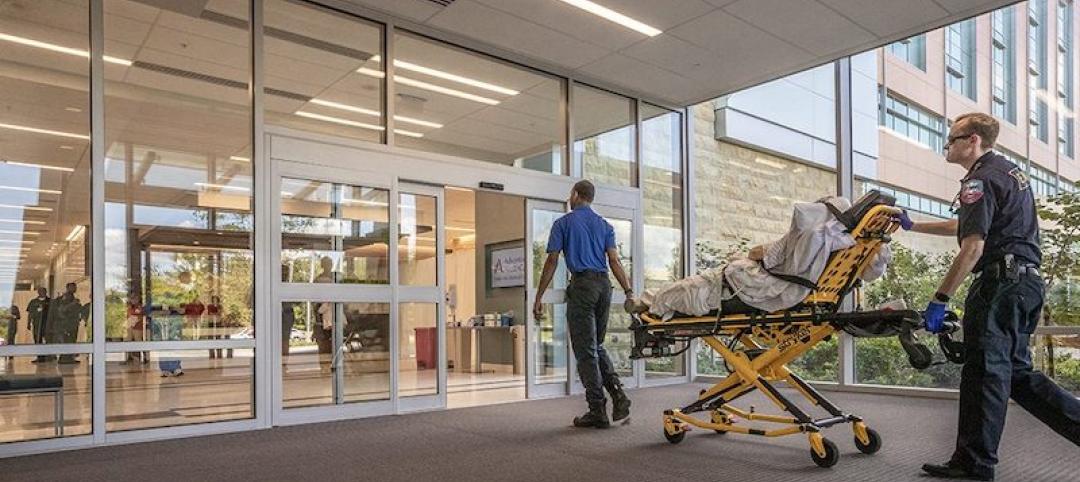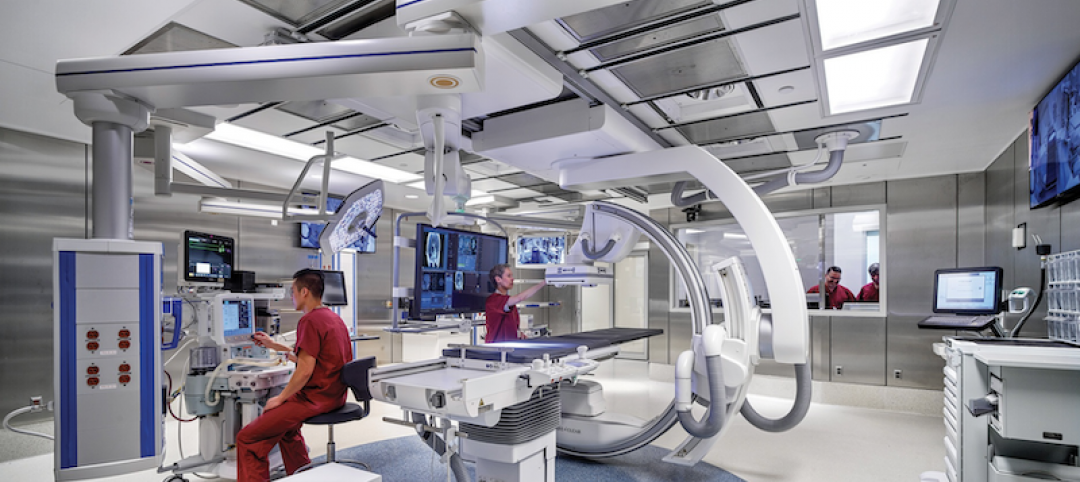Last August 1, Uvalde (Texas) Memorial Hospital broke ground on a 170,000-sf, $83.5 million replacement hospital that is following a building model specifically for rural and underfunded communities, devised by this project’s general contractor Hoar Construction.
Over the past decade, Hoar’s Texas division has built or renovated more than 1.3 million sf of healthcare facilities using a preconstruction formula that helps rural healthcare providers overcome budget barriers and win over community and political support for funding on capital improvement projects.
“Rural healthcare is in crisis right now,” observes Coker Barton, Hoar Construction’s Senior Vice President of Healthcare. “We’ve seen 126 rural hospitals across the United States close since 2010. Rural healthcare is unique in that it really does take a village to get a project across the finish line, or even started for that matter. After completing our first project, we saw an opportunity to really dig in and help these healthcare providers early in the process so they could make the most of their budgets and provide that much-needed care to their local communities.”
Some recent examples where the Hoar applied its roadmap include:
•Faith Community Hospital in Jacksboro, Texas, a $28 million facility that, when it opened in September 2015, replaced a 60-year-old building that nearly closed due to bad management and unsafe conditions.
Through value engineering Hoar found $100,000 in savings that allowed this project to move forward. The hospital also did a needs assessment before going to the voters for funding, which they had been rejected previously. (To build grassroots support for a new hospital, Faith, spearheaded by its CEO Frank Beaman, boosted community engagement and education, and hired additional personnel to follow-up with patients.)
This is the first rural/sole provider hospital in the state with a geothermal water heat pump, which helps reduce operating costs.

Faith Community Hospital had to overcome community opposition to its cost.

•Mountain Lakes Medical Center, a 67,000-sf critical access hospital in Clayton, Ga., whose construction was $2 million over budget when Hoar came on board. Hoar saved this project nearly $400,000 by switching to exterior insulation and finish system (EIFS) panels, from more expensive exterior cladding made by Trespa International. Hoar also streamlined trade partners’ work to ensure faster delivery of the project, which was completed in October 2017.
Uvalde, Texas, population 16,000, is a 7.6-square-mile town about 80 miles west of San Antonio. Its current hospital—which will be torn down once the new one is ready for occupancy in September 2021—was built in 1972. The U.S. Department of Agriculture’s rural development office is financing the new hospital’s construction through $58.5 million in direct funding and $16.5 million in guaranteed loans. The hospital intends to issue 40-year bonds to raise $75 million.
Finding potential financing vehicles is part of the roadmap Hoar Construction has devised for community and rural hospitals that are often at “a natural disadvantage for borrowing money.” Those vehicles can include bond financing, the Federal Housing Administration’s Section 242 Mortgage Insurance program, and USDA’s Communities Facilities loan program.
Hoar has mapped out how a project’s preplanning, preconstruction, and construction stages should move forward. For example, it says that hospitals need to “consider your ideal facility 50 years from now, cost implications, possible interruptions, and long-term growth.” It states that operational planning is “key” to completing a successful project. “Consider the relocation of equipment and transfer of staff and IT infrastructure to ensure a seamless move.”

Mountain Lakes Medical Center connects its patients with the outdoors.

Perkins and Will designed Uvalde Memorial. Hoar’s model takes into account programming and project definition, architectural design and engineering, and the development of construction contract documents. The success of this process, it says, rests on thorough and timely input from hospital personnel, and early constructability input related to the use of cost-effective building systems that balance initial cost and long-range operational expenses.
“The roadmap really champions the idea of a collaborative design review, which include great partners like Perkins and Will and even our trade partners to come up with a workable plan and meet the challenge of how we’re going to build a hospital or other healthcare facility,” says Hoar’s Barton. “This way, we can price out every process, material, and design element as the architect draws it. By having daily or weekly design meetings, we can understand what they’re drawing and what our owner is seeking in the design. If something is over budget or there’s an issue that could negatively impact the schedule, we can identify it in real time and work with the design team to find a better option.
“Essentially, we’re making a series of small corrections during the design phase, instead of wholesale rework during construction. This also helps determine the best workflow and maintain the construction schedule,” Barton says.
Hoar has found that the CM-at-Risk delivery method works best for these kinds of projects “because we can get involved early and be part of the team, which helps with the budget and schedule,” explains Barton. Understanding project expectations early allows the team to eliminate waste and produce more accurate documents and cost estimates. Hoar’s roadmap focuses specifically on MEP systems and specifications, “which are the largest driver of construction costs and can create operational issues when MEP systems are not sized appropriate[ly] for your facility.”
The new hospital in Uvalde will include 132,870 sf of institutional space, 31,872 sf of administrative space, and a 11,500-sf central utility plant. The replacement hospital will house an emergency department, physical and occupational therapy department, a 25-bed medical surgical inpatient unit, and 16 outpatient beds.
Related Stories
Healthcare Facilities | Feb 28, 2020
Valleywise Health Medical Center breaks ground in Phoenix
Cuningham Group Architecture and EYP designed the project.
Healthcare Facilities | Feb 27, 2020
Milieu: Creating restorative environments in behavioral health
It’s time to take a closer look at the collection of therapeutic settings known as milieu.
Healthcare Facilities | Feb 11, 2020
New York City’s largest freestanding cancer center opens
The building creates a model for 21st century cancer care.
Healthcare Facilities | Feb 3, 2020
China builds 645,000-sf coronavirus hospital in 10 days
The project began construction on Jan. 23.
Healthcare Facilities | Jan 30, 2020
The complex dance of healthcare transitioning
Hospital employees, though excited about technological advancements, are expected to navigate a new workplace and care for their patients at the same time, all while training on new equipment and navigating a new building.
Healthcare Facilities | Jan 15, 2020
Top 4 healthcare design trends that will shape medical planning in the 2020s
For patients and healthcare staff, these developments will be most evident in new tools, such as robotic surgical tables and intra-hospital delivery drones, that improve healthcare services and outcomes.
Architects | Jan 6, 2020
Merger expands HED’s presence in SoCal
Puchlik Design Associates, its new addition, specializes in healthcare design.
Healthcare Facilities | Nov 26, 2019
Grand Rapids, Mich., is striving to emerge as a health research and innovation space
Michigan State University is part of a development team for a new life sciences building.
Healthcare Facilities | Nov 6, 2019
A new hospital tower will serve women and children exclusively in the expanding San Antonio market
This $500 million project represents the next phase in the hospital system’s capital improvement program.
Healthcare Facilities | Nov 5, 2019
UNC Health Care’s Surgical Tower set to begin construction
Skanska USA will build the project in three phases.

















